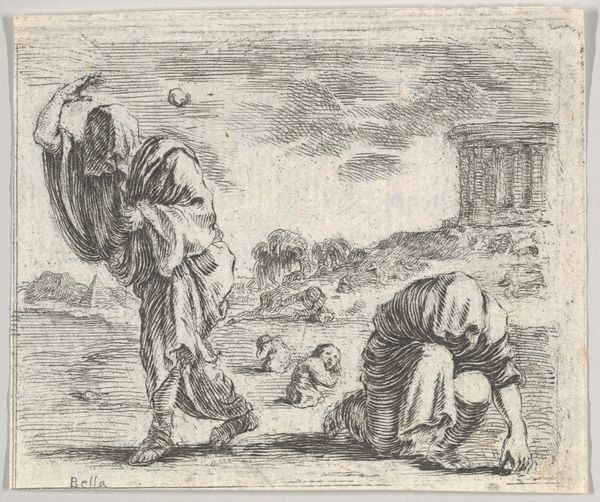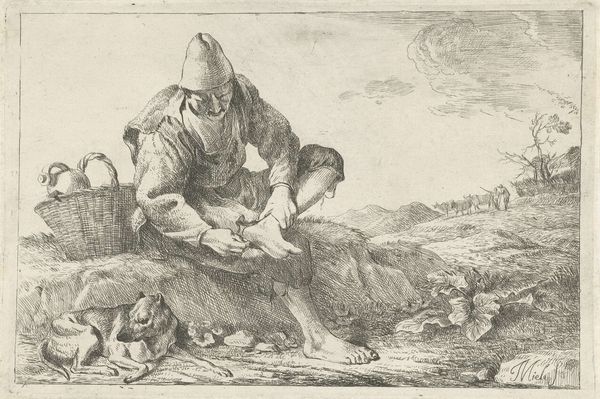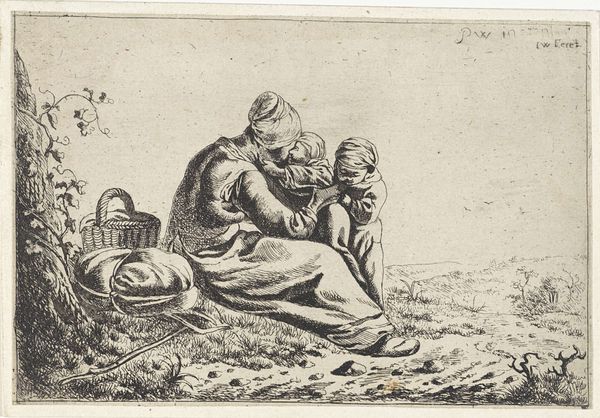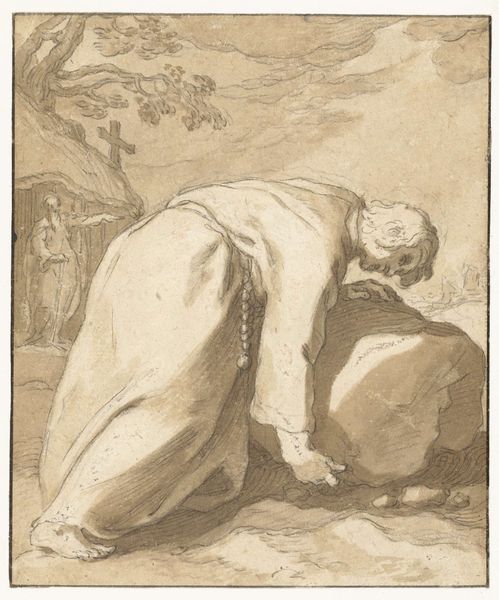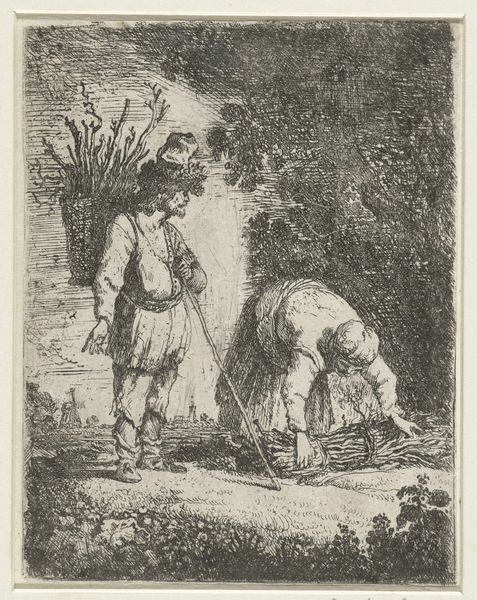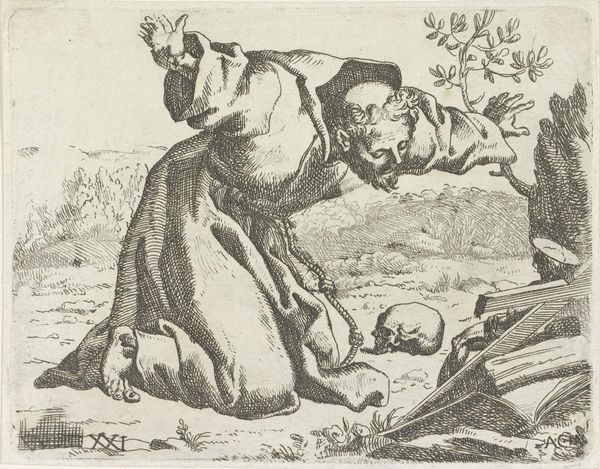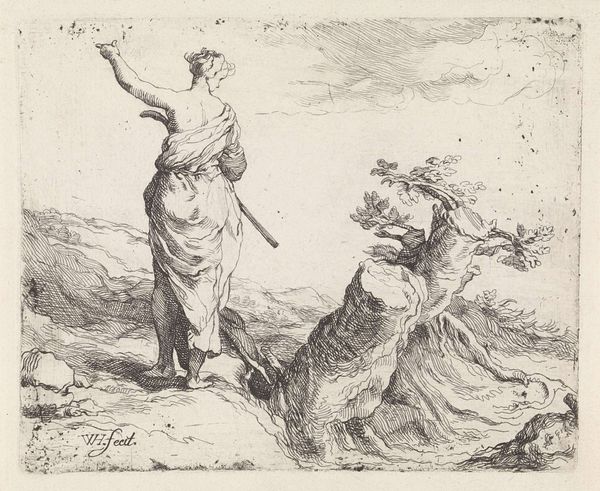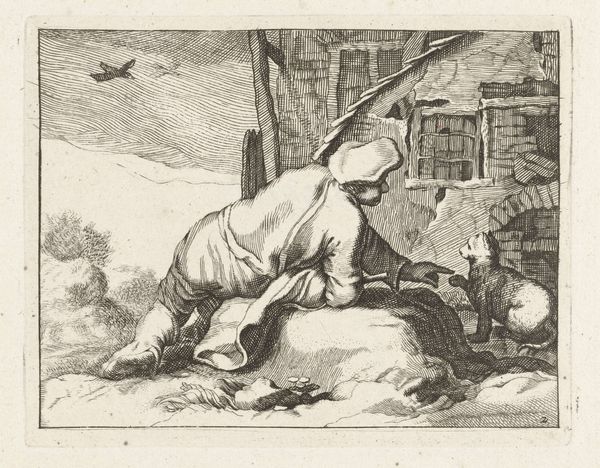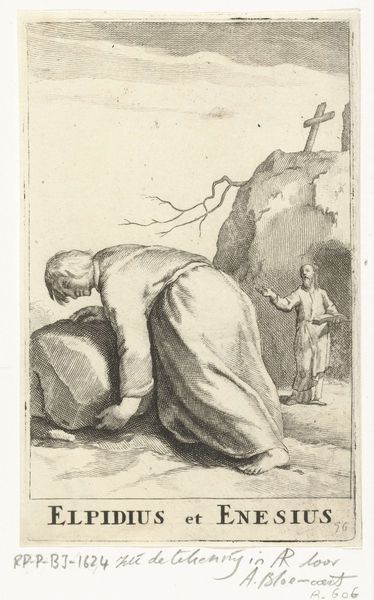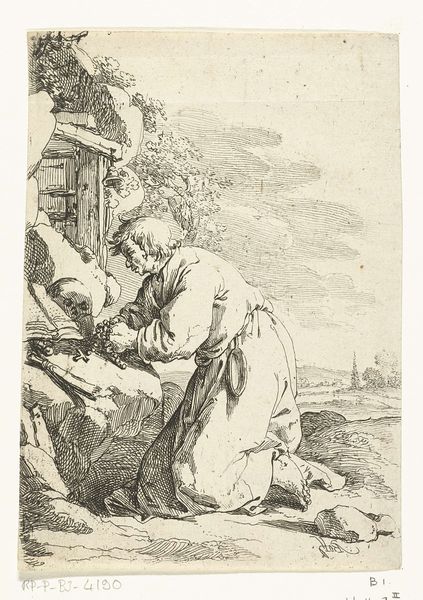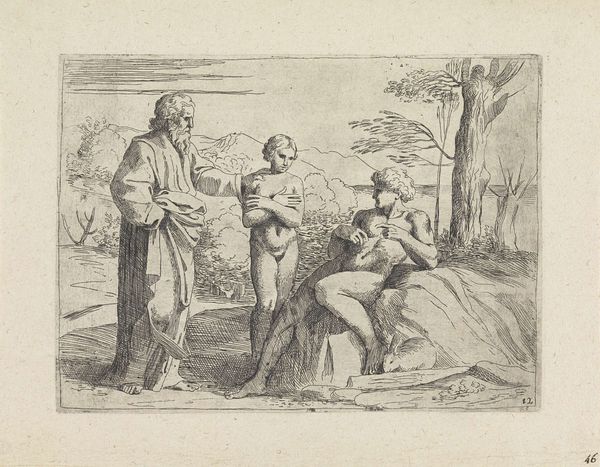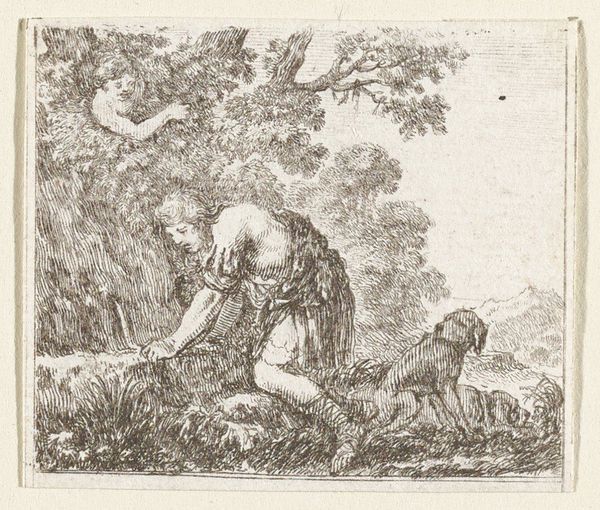
print, etching
#
baroque
# print
#
etching
#
landscape
#
classical-realism
#
figuration
#
history-painting
Dimensions: 1 13/16 x 2 1/8 in. (4.6 x 5.4 cm) (sheet)
Copyright: Public Domain
Editor: This etching, titled "Deucalion et Pyrrha," created around the 17th century by Stefano della Bella, has such a strange and haunting atmosphere. The figures are draped and faceless, in what appears to be a barren landscape. What strikes you most about its visual composition? Curator: The power of this piece resides, first, in its manipulation of line. Note the density of etching that forms the draped figures, creating a sense of weighty presence in contrast to the sparser, almost skeletal rendering of the landscape. Bella establishes a binary of solidity and emptiness, drawing the eye into the core of the drama. What purpose do you believe it serves? Editor: So the contrast really emphasizes the figures… I hadn't thought of it like that. Is it about their isolation after some catastrophe, like the flood the myth describes? Curator: Isolation, yes, but also transformation. The lines coalesce into figures, becoming increasingly sculptural; this echoes Ovid's story in *Metamorphoses*, where the stones thrown by Deucalion and Pyrrha transform into humans. See how the figures seem both present and spectral, not fully realized. This deliberate visual ambiguity forces the viewer into an active role. Editor: I can see that. There is this push and pull between absence and presence, it seems very deliberate. Do you think the temple ruin is essential? Curator: Undeniably. The ruined classical structure reminds us of the fragility of civilization. Furthermore, consider how it interacts with the figures: a stable vertical counterpoint to their tentative gestures of rebirth. Does the artist create a narrative that is about the figures or the ruin and land in your opinion? Editor: Perhaps both are equal players in a kind of dialogue. Seeing how Bella uses line and form to tell this story really brings it alive. Curator: Indeed. By isolating and examining the elements within, we unlock deeper narratives of human existence and its capacity to rebuild.
Comments
No comments
Be the first to comment and join the conversation on the ultimate creative platform.
